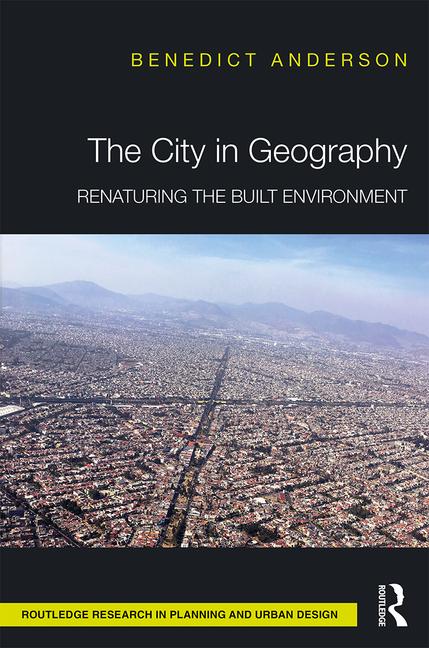
The City in Geography, Renaturing the Built Environment Pub. 2019
https://www.routledge.com/The-City-in-Geography-Renaturing-the-Built-Environment-1st-Edition/Anderson/p/book/9781138645547
Monumental in scale and epic in development, cities have become the most visible and significant symbol of human progress. The geography on and around which they are constructed, however, has come to be viewed merely in terms of its resources and is often laid to waste once its assets have been stripped. The City in Geography is an urban exploration through this phenomenon, from settlement to city through physical geography, which reveals an incremental progression of removing terrain, topography and geography from the built environment, ushering in and advancing global destruction and instability. This book explains how the fall of geography in relationship to human survival has come through the loss of contact between urban dwellers and physical terrain, and details the radical rethinking required to remedy the separations between the city, its inhabitants and the landscape upon which it was built.
Chapter 1. Thinking Geography – A Brief History Chapter 2. The Nature of Geography – Geological Time Chapter 3. Becoming Geography – Creation Scapes Chapter 4. The Fall of Geography – The Fate of Ground Chapter 5. Building Geography – Emerging, Forming, Patterning Chapter 6. Future Geography – City Adaptations and Meta-Morphoricals
Endorsements
“Geography as a way of thinking has been in recession. Not since Man’s Role in Changing the Face of the Earth (University of Chicago Press 1956) and The Geography of the Imagination (Picador 1984) has there been a sustained attempt at using geographical lenses to understand human interactions with the surface of this planet. Ben Anderson makes a new start.”
Leon van Schaik AO, Emeritus Professor of Architecture, RMIT, Melbourne, Australia
“Linking the rewilding of the future city to the wilding of the people who live there, Anderson’s short history of ‘geography’s downfall’ makes a compelling case for ‘turning over and breaking the ground’ in a new, sustainable contract not only with topography but with our own ‘wild surfaces’. Original, widely referenced, The City in Geography recasts the scope and outreach of (post-) human geography.”
Paul Carter, Professor of Design and Urbanism, RMIT University, Australia